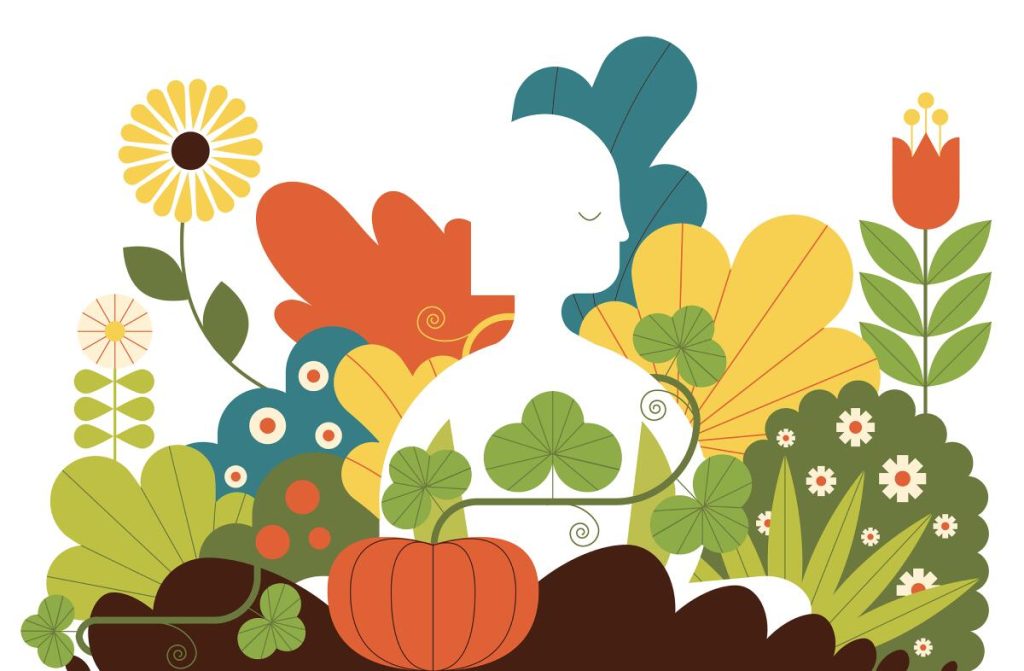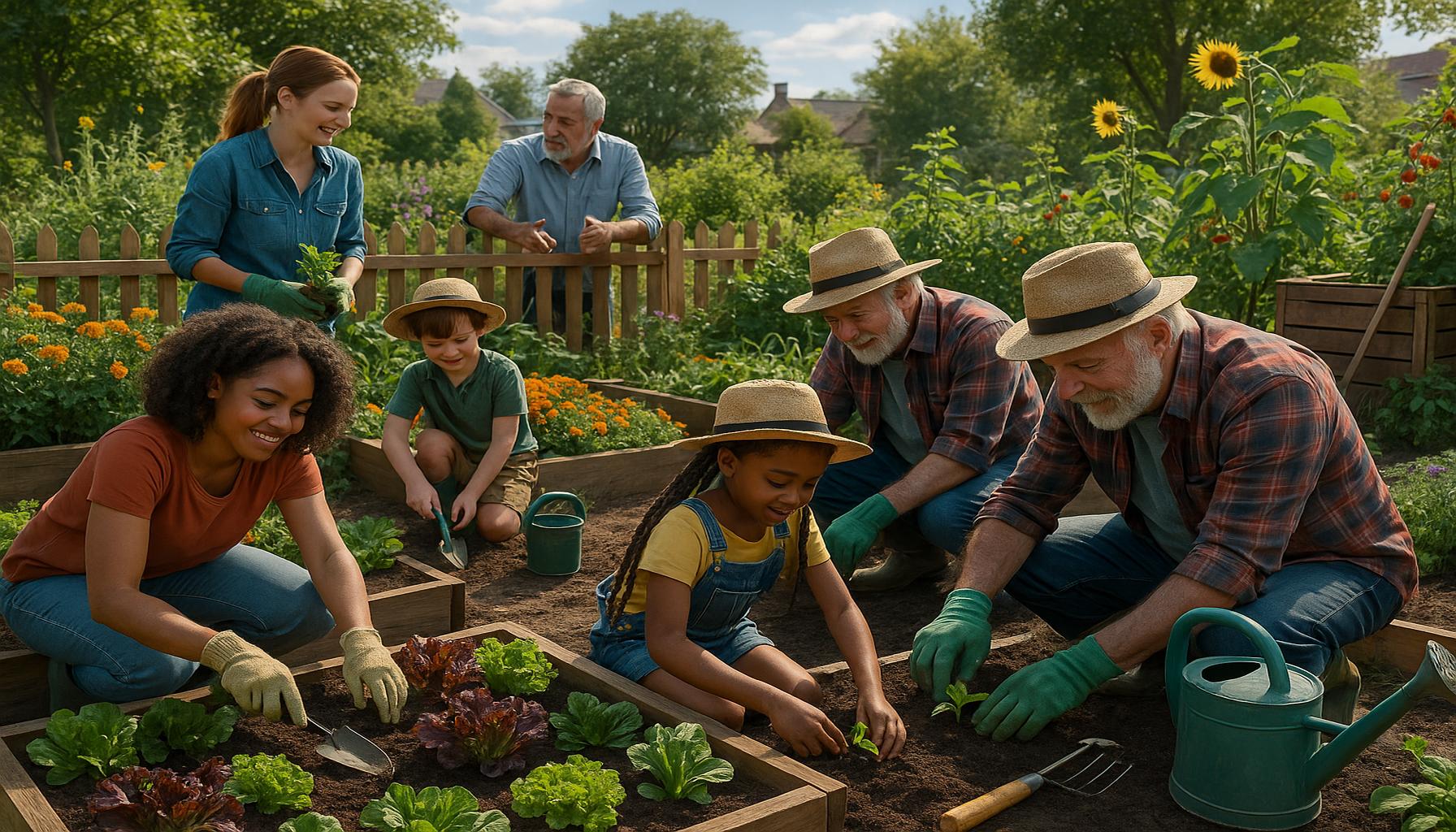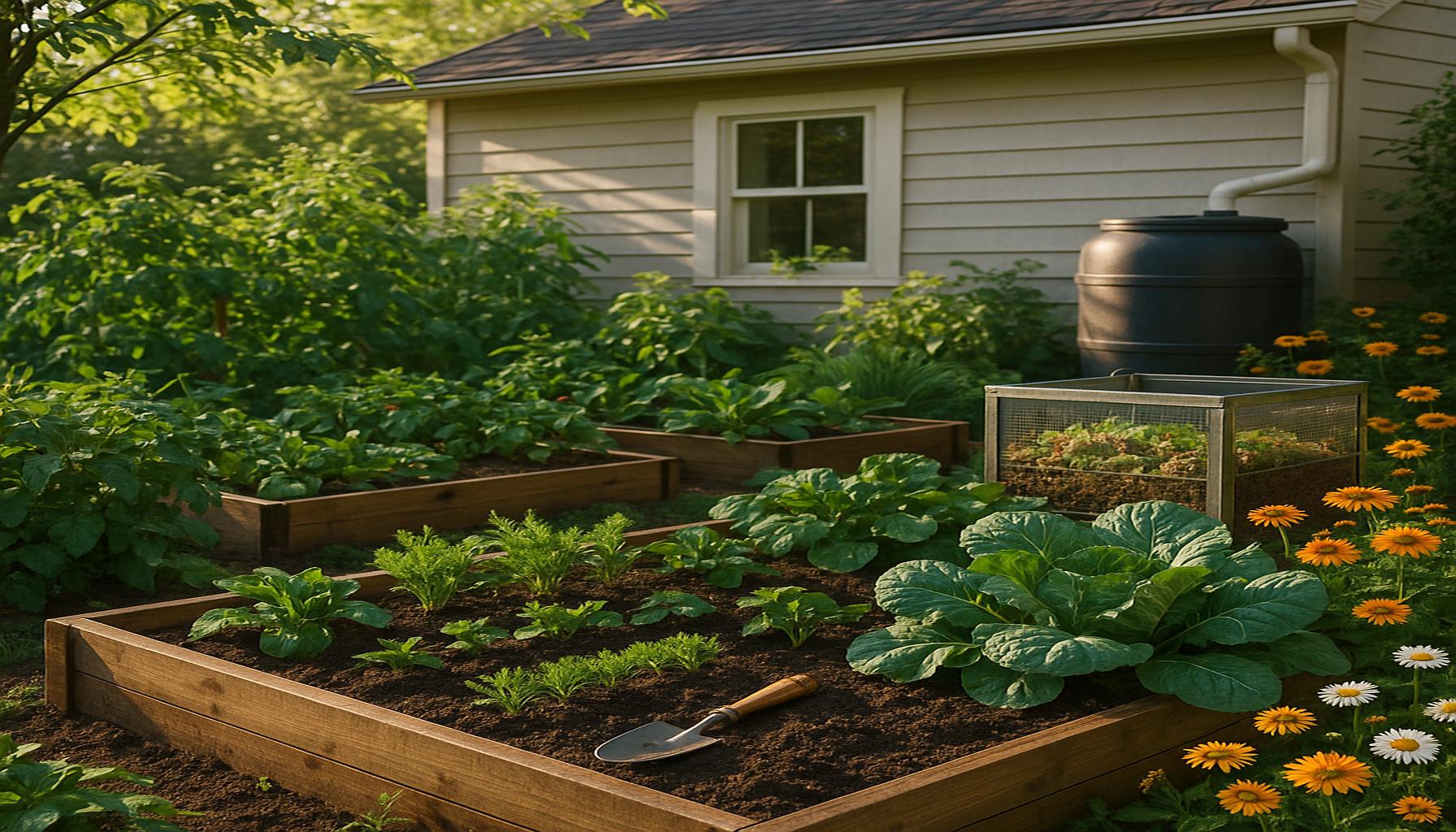Garden Therapy How Gardening Enhances Mental Health Benefits

Connecting Nature and Well-being
In today’s fast-paced world, stress and anxiety have become common challenges. Many individuals are searching for effective ways to improve their mental health and well-being. Creative hobbies have emerged as a powerful solution, and one of the most therapeutic activities is gardening.
The Healing Power of Gardening
Gardening offers a multitude of benefits that extend beyond aesthetics. Engaging with plants and soil can:
- Reduce stress and anxiety by promoting relaxation.
- Enhance mood through physical activity and sunlight exposure.
- Boost self-esteem as individuals see their efforts bloom and grow.
- Encourage mindfulness by fostering a connection with nature.
- Provide a sense of accomplishment through nurturing living things.
As we delve deeper into this fascinating topic, we’ll explore the Top 5 mental health benefits of gardening. Prepare to uncover how simple acts of cultivating a garden can lead to profound changes in mental well-being.
Top 5: The Therapy of Gardens: How Gardening Can Aid Mental Health
Gardening is a delightful pursuit that transcends being just a creative hobby. It emerges as a therapeutic practice with immense potential to enhance mental well-being. The quiet act of gardening can profoundly impact mental health, offering solace and tranquility in a busy world. This article delves into the top five methods through which gardening supports mental health, encouraging individuals to reclaim a meaningful connection with both themselves and nature. Embark on this journey to discover how nurturing plants can become a pathway to inner peace and mental clarity.
5. Physical Activity for Stress Relief
Engaging in gardening brings about a range of physical activities that not only enhance fitness but also play a pivotal role in stress alleviation. Regular physical activity through gardening can significantly elevate one’s mood, due to the release of endorphins, the body’s natural mood enhancers. Participating in gardening requires various actions, each with its own unique benefit:

- Weeding and hoeing: These activities require repetitive motions that emphasize strength and endurance.
- Planting and transplanting: Engaging fine motor skills and attention to detail promotes mental focus.
- Digging and raking: These tasks engage multiple muscle groups and offer a vigorous workout.
- Watering and harvesting: These provide a sense of purpose and completion as one cares for the plants.
These actions not only invigorate the body but also channel mental energies towards a task, diverting attention from the stressors encountered in daily life. The physicality of gardening acts as a natural outlet for stress and tension, creating a space for calmness and relief.
4. Connection to Nature
Amidst the rush of modern life, the connection to nature often becomes fragmented. Gardening serves as a bridge to restore this connection, immersing individuals in the vibrancy of the natural world. This immersion yields multiple psychological benefits, prominently reducing anxiety and depression. Embracing natural elements such as soil, sunlight, and rain fosters a deeper appreciation for the environment, contributing to enhanced well-being.
Nurturing a garden establishes a tangible bond with the earth, drawing focus away from the digital chaos and onto the serene beauty of growing life. This mindfulness cultivates gratitude and a renewed perspective, revitalizing one’s mental state. The bond formed through gardening is a reminder of the simplicity and elegance of nature, engendering peace and contentment.
3. Mindfulness and Present-Moment Awareness
With its concentrated attention and gentle pace, gardening naturally facilitates mindfulness. The engagement required in planting, watering, and nurturing plants fosters a meditative state that can divert the mind from anxiety and negative thought patterns. As one tends to the garden, the mind anchors itself in the present moment, weaving a tapestry of mindfulness.
Observing the gradual transformation of seeds into thriving plants is an exercise in patience and presence. This process encourages a cessation of ruminative thoughts and invites individuals into a state of tranquil awareness. The deliberate, slow rhythm of gardening instills a sense of calm and enhances the capacity to focus steadily on the task at hand.
2. Creative Expression and Fulfillment
Gardening blossoms as an art form, providing a platform for creative expression and emotional liberation. Whether designing landscapes, arranging color palettes, or selecting plant varieties, individuals channel their creativity into cultivating living art. This creative process battles stagnation and boredom, replacing them with a vibrant sense of accomplishment.
Watching a garden flourish under one’s care instills joy and fulfillment, profound contributors to elevated self-esteem. The act of creating and maintaining a garden resonates deeply with personal growth, igniting a sense of purpose and achievement in those who engage with it. Gardening is not merely planting but a dynamic, creative dialogue with nature itself.
1. Community and Social Connection
Finally, at the pinnacle of gardening benefits lies the power of social connection. Sharing gardening experiences with family, friends, or community groups enriches mental health through building relationships and camaraderie. Community gardens and horticultural societies offer platforms for social interaction, combatting loneliness and isolation.
These interactions nourish the spirit, providing advice, encouragement, and shared joy in communal gardening experiences. Enthusiastic exchanges on gardening tips or mutual efforts in a shared garden bring about a strong sense of belonging. By nurturing plants collectively, individuals form lasting connections, empowering mental resilience and stability.
The multifaceted practice of gardening becomes a sanctuary for those seeking mental solace. From enhancing physical activity and connecting with nature to fostering mindfulness, creativity, and community bonding, gardening stands as a remarkable therapeutic tool. Embracing the art of gardening is to embark on a journey toward mental well-being, rediscovering peace within the rhythm of nature.
| Category | Key Features | Advantages | Disadvantages | Who Benefits Most |
|---|---|---|---|---|
| Physical Well-being | Engagement in gardening activities that promote physical fitness, such as digging, planting, and weeding. | Improves cardiovascular health, enhances strength, and fosters weight management. | Can induce fatigue or strain if not practiced cautiously, especially for those with prior physical limitations. | Individuals looking to enhance their physical health through gentle, therapeutic exercise. |
| Emotional Resilience | Engagement in mindfulness practices while gardening, focusing on the sensory experiences. | Encourages emotional expression, improves mood, and decreases symptoms of anxiety and depression. | Initial emotional discomfort when facing underlying issues, which may surface during the activity. | People experiencing stress or seeking an outlet for emotional challenges. |
| Social Interaction | Gardening can be a group activity, fostering community and social bonding through teamwork. | Builds relationships, enhances communication skills, and combats feelings of isolation. | May not suit introverted individuals or those uncomfortable in group settings. | Individuals seeking to improve their social skills or make new connections. |
| Cognitive Engagement | Involves planning, problem-solving, and decision-making related to garden design and plant care. | Enhances cognitive function and memory, while providing a sense of accomplishment. | Can be overwhelming for those with cognitive impairments if tasks are too complex. | Older adults or individuals looking to maintain mental agility and cognitive health. |
Gardening, often overlooked, is a powerful therapeutic avenue that engenders a multitude of benefits for mental health. As individuals engage their senses with the rich textures of soil and vibrant colors of flowers, they tap into a world that soothes and heals. It is essential to understand these categories as they underscore the profound impact gardening can have on our lives. Each aspect offers an array of possibilities that, when embraced, can lead to rejuvenation and wellness. Consider the physical aspect of gardening; it provides not only a way to get outside but also to exercise organically through the movements required for planting and maintaining a garden. Research has shown that such activities significantly boost mood levels and energy. As the heart works in harmony with the rhythm of nature, individuals can enhance their physical well-being in surprising ways.The emotional benefits of gardening cannot be overstated. The act of nurturing plants parallels our intrinsic need to nurture ourselves and others, fostering a resilient emotional landscape. Furthermore, participating in group gardening exercises strengthens community bonds, helping to mitigate feelings of loneliness. Cognitive engagement derived from planning a garden, selecting plants, and tending to their needs stimulates the brain in meaningful ways. This engagement has the potential to sharpen one’s memory and problem-solving skills while delivering a gratifying sense of accomplishment as the results unfold.Ultimately, understanding these categories reveals not just the therapeutic value of gardening but also the myriad paths it offers to those in search of mental wellness, social connectivity, and cognitive vitality.
Frequently Asked Questions About Garden Therapy and Mental Health
What is garden therapy and how does it support mental health?
Garden therapy, also known as horticultural therapy, involves engaging in gardening activities to improve mental health and well-being. It supports mental health by promoting relaxation, reducing stress, and providing a sense of accomplishment. Studies have shown that interacting with nature and participating in gardening can decrease symptoms of anxiety and depression while enhancing mood and self-esteem.
Who can benefit from garden therapy?
Garden therapy is highly inclusive and can benefit people of all ages and backgrounds. It is particularly beneficial for individuals dealing with stress, anxiety, depression, or those in rehabilitation for various conditions. The tactile and sensory-rich nature of gardening activities can also be advantageous for individuals with cognitive disabilities or those experiencing social isolation.
Are there specific plants that are more beneficial for mental health?
While all plants can contribute to a tranquil environment, certain plants are known to provide additional mental health benefits. Lavender, chamomile, and jasmine are recognized for their calming properties. Plants like rosemary and peppermint can improve concentration and mental clarity. Choosing a variety of plants that stimulate different senses can enhance the therapeutic experience.
How much time should one dedicate to gardening for it to be effective for mental health?
The effectiveness of garden therapy can vary depending on individual preferences and schedules. However, spending as little as 20 to 30 minutes in the garden a few times a week can result in noticeable improvements in mood and stress levels. Consistency is key, and integrating gardening into one’s routine, even in small doses, can lead to sustained mental health benefits.
Can garden therapy be practiced indoors, and how?
Absolutely! Garden therapy can be adapted for indoor environments using houseplants or small indoor gardens. Herb gardens, terrariums, and vertical planters are excellent options for those with limited outdoor space. Indoor gardening can provide similar emotional and physical benefits, fostering a sense of connection with nature right within your home.
Conclusion: The Healing Essence of Gardening
Gardening, often seen as a simple leisure activity, unfolds its profound impact as a therapeutic tool supporting mental well-being. As we explored in this article, the practice of gardening offers a unique combination of physical activity, exposure to nature, and a creative outlet, all of which play a vital role in enhancing mental health.
Engagement with gardening has been linked to a reduction in stress, anxiety, and depression. The natural rhythm of planting, nurturing, and harvesting serves as a meditative and calming process, promoting mindfulness and a sense of presence. Furthermore, the tactile connection with soil and plants releases endorphins, often referred to as the “happy hormones,” bolstering one’s mood and overall sense of well-being.
Moreover, gardening fosters a sense of accomplishment and responsibility, offering tangible rewards that boost self-esteem and are invaluable for individuals struggling with mental health challenges. It cultivates a space for creativity, allowing people to express themselves and explore imagination without boundaries.
The Lesser-Known Perks of Gardening
- Gardening can enhance social connections through community gardens and shared experiences, combating feelings of isolation.
- It encourages sustainable practices, instilling a deeper respect for the environment and promoting a more balanced lifestyle.
- The integration of garden therapy into therapeutic interventions is gaining recognition, highlighted by increasing studies supporting its benefits.
The importance of incorporating creative hobbies like gardening into daily life cannot be overstated. As a gentle yet powerful tool, garden therapy holds the potential to transform lives, offering solace and renewal in today’s fast-paced world. The profound impact of nurturing a garden is testament to nature’s remarkable ability to heal, inviting more people to discover the joys and healing powers of this green sanctuary.


